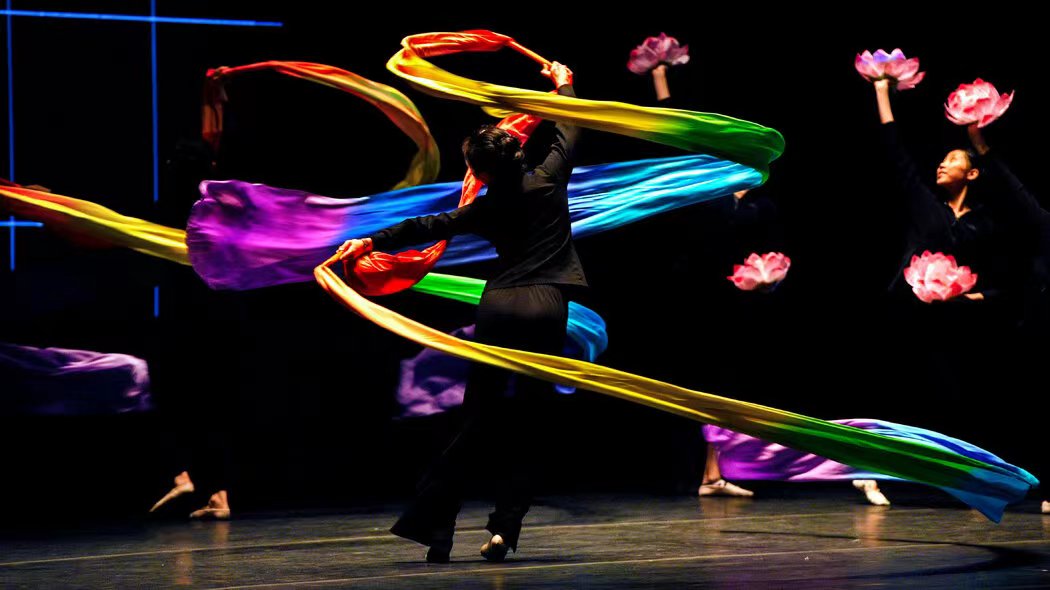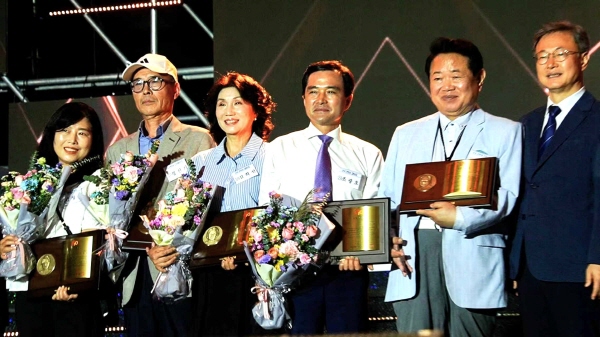2024,Sep,21 한국 뉴스 편집부 시청자수 3570674
They began appearing about two decades ago, often around the holidays, and often at high-end venues: troupes of Chinese dancers swirling gracefully in colorful costumes.
First in New York City, then in Paris, Toronto and Taipei, the dancers — mostly teenagers and young adults — flipped and vaulted onstage in soaring routines meant to awe and entertain and also to spread the message of Falun Gong, the persecuted Chinese religious movement behind the performances.
Since then, the dance group, Shen Yun Performing Arts, has grown into an economic engine for the movement and its leaders, with brisk ticket sales on five continents and holdings of more than $265 million.
But for the young people who powered the show, the success has come at a steep cost.
In pursuit of ever larger audiences, Shen Yun has treated many of its performers as an expendable commodity, a New York Times investigation has found. It has routinely discouraged them from seeking medical care when their bodies have broken down, and commanded their obedience to grueling rehearsal and tour schedules through relentless emotional abuse and manipulation.
In interviews, some former dancers recounted performing through dislocated kneecaps, sprained ankles or other serious injuries, unwilling to seek medical treatment because the group’s belief system regarded such care as a crutch of the unfaithful.
Others were racked with emotion as they recalled being made to participate in regular weigh-ins by instructors who publicly berated them for being too fat.
Most described feeling used by a religious movement that was focused on spreading its views even if performers were harmed in the process — while raking in money from ticket sales.
Many of the dancers and musicians who spoke to The Times hesitated to share their stories publicly, fearing retaliation by Falun Gong and its spiritual leader. That leader, Li Hongzhi, introduced the movement in China in 1992, at a time when ancient energy-based exercises were surging in popularity. He has led it in exile while presiding over the guarded 400-acre compound in upstate New York where many of Shen Yun’s performers live and train.
In a statement, representatives of Shen Yun and Falun Gong said the performers who spoke to The Times were presenting a picture of the dance group and religious movement that distorted reality “in bizarre and dramatic ways.” They said that The Times was playing into the hands of the Chinese Communist Party, which has sought to stamp out the movement, by committing a “bigoted attack” on a faith that promotes good health, moral living and strong families and communities.
Based in part on elements of Buddhism, Falun Gong holds that people who practice its poses and meditation regimen can attain enlightenment. But in speeches and writings, its founder, Mr. Li, has also incorporated less conventional ideas, implying that he is the creator of the universe, saying that faithful adherence can purge the body of illnesses and suggesting that followers can develop supernatural powers, such as the ability to levitate.
And, for the past two decades, Mr. Li has positioned his group in direct opposition to the ruling Chinese Communist Party, which has imprisoned Falun Gong followers and demonized them in state propaganda.
Against that backdrop, Mr. Li’s movement has put Shen Yun forward as a propaganda tool of its own, amplifying the show’s anti-Communist message through a network of companies founded by Falun Gong practitioners, including a widely read newspaper, The Epoch Times.
Inside Shen Yun, the group’s leaders told their young performers that each show was an urgent spiritual mission, and they led them to believe that anyone who spoke out against the movement would face dire consequences.
Even so, 25 former dancers, musicians and instructors spoke openly to The Times about their experiences in Shen Yun, including a handful who had left the group within the past 18 months. They described a pattern of abusive behavior by Shen Yun’s leaders that spanned nearly two decades and occurred as hundreds of performers cycled in and out of the dance company.
Their accounts, along with hundreds of pages of public records and dozens of photos and recordings smuggled out of the group’s headquarters, offer an unusually candid look at life inside the productions, which Shen Yun’s ubiquitous advertising has billed as “entertainment of the highest order.”
Nothing in the advertisements signals that the show is aimed at promoting a religious movement. And audience members, who may pay $309 a ticket, have little indication that the performers are laboring for that movement. They see smiling dancers who leap onstage and spend the next two hours performing synchronized spins and flying splits. Some scenes portray Falun Gong followers being beaten by Chinese state police.
But many of the former dancers and musicians said they pushed themselves to their physical and mental limits because they were taught that performing a flawless Shen Yun show would save their audiences from an approaching apocalypse. It was a message that was constantly reinforced in lessons that instilled a fierce sense of obligation, as well as mistrust of the outside world, they said.
Often, they worked 15-hour days — rehearsing, performing, even setting up and breaking down heavy orchestra equipment — for low or no pay, toiling under the impression that they were indebted for the cost of the schooling, food and lodging that the movement provided them.
Nearly all the performers were sent to Shen Yun by family members who were ardent Falun Gong practitioners. Some had arrived at the movement’s New York State headquarters, known as Dragon Springs, having not yet turned 12.
They were unable to leave the compound without special permission and were typically limited in how often they could see their families. Many had traveled to New York from across the United States and other countries and remained in the complex well into their 20s.
Cheng Qingling, who grew up practicing Falun Gong with her mother in New Zealand, arrived at Dragon Springs at age 13. Ms. Cheng, a former dancer, now 27, said she rationalized her bad experiences there — the untreated injury that made her left arm go numb, the constant yelling by instructors, the shaming of her classmates for breaking minor rules — by giving them a higher meaning.
“They’re just testing our devotion,” Ms. Cheng said she told herself. “But then I thought, if I use normal human values and judge this, this is wrong.”
Some performers who wanted to quit before the group was ready to let them go faced threats and intimidation. Their managers told them they would go to hell or face danger if they left, because they would lose Mr. Li’s protection. Seven former performers said they were also told that they would have to repay the cost of tuition if they quit Shen Yun.
The representatives of Shen Yun and Falun Gong declined to make Mr. Li and other Shen Yun leaders available for interviews.
In their statement, the representatives, Ying Chen and Levi Browde, called the performers who spoke to The Times a “relatively tiny, disgruntled group” who shared “fantastical stories.”
They denied that performers who got hurt routinely went without medical care, and they said that any suggestion of a toxic environment at Dragon Springs was “highly subjective and smacks of cultural bigotry.”
“The community at Dragon Springs is a close-knit, predominantly Asian community that values disciplined study and training, and is characterized by open, honest and direct interactions,” they said. “We are, essentially, a big family with a shared faith.”
The Times’s reporting on Shen Yun, they added, was likely to become “the crown jewel” in the Chinese Communist Party’s efforts to discredit Falun Gong.
The Chinese government banned Falun Gong after more than 10,000 practitioners staged a silent protest outside the Communist Party’s headquarters in Beijing in 1999. Since then, many practitioners have been detained and died in police custody. Chinese officials have continued to target them.
Still, the movement has flourished, amassing a global following whose members can be seen practicing gentle movement exercises in public parks worldwide.
As Falun Gong spread, Mr. Li gained influence as well. He helped create the Shen Yun performance group in 2006. Now, with his wife, Li Rui, he presides over Dragon Springs, the upstate compound that is fitted with a towering pagoda and a giant golden statue of Buddha — with a face that bears a striking resemblance to his own.
Students living on the mountain, as the compound is also known, are taught to greet Mr. Li as “shi fu,” the Chinese word for “master,” while clasping their hands and bowing. They quickly learn that Ms. Li is a primary enforcer of his rules.
Many of the former performers reached by The Times said that Shen Yun gave them the opportunity to travel and improve their Chinese language skills, and that they appreciated the work ethic it instilled.
“Personally, I cherish the time I spent at Shen Yun. I learned and matured a great deal,” said Susan Zhou, a former dancer with the company, in an email to The Times. “I think it’s a wonderful institution that creates an inspiring show for people all around the world.”
But the vast majority said it also exposed them to unyielding indoctrination.
During a lecture last year, Mr. Li, who is in his early 70s, told students in Chinese that he created the earth and “established the music of mankind,” according to a recording of his remarks provided to The Times by an audience member.
Questioning such rhetoric was seen as a grave offense.
“What I experienced there is tremendous psychological pressure to conform,” said David Fiedler, 66, who taught violin at Dragon Springs from 2013 to 2016. “You have to either leave or you have to be willing to abandon your reason, because you can’t hold onto both.”
At age 11, Kate Huang dropped out of school in Kaohsiung, Taiwan, and traveled some 8,000 miles with her mother to rural Cuddebackville, in Orange County, N.Y. — the home of Falun Gong’s headquarters.
There, she enrolled in Fei Tian Academy of the Arts, the boarding school where Shen Yun performers are trained.
Ms. Huang had no dance experience, but she grew up around Falun Gong followers who had told her to seize the chance to be closer to Mr. Li. Her grandmother had practiced the exercises every morning at 4 a.m. Her mother had sold tickets to Shen Yun shows.
“Everyone said it was the place you should be, because it’s the best place to be on earth,” said Ms. Huang, now 26, who asked to be identified by her English first name.
Soon afterward, she was in a dance class, lying on her back for a flexibility exercise. Hovering over her, a teacher gripped her ankle and began pushing it toward her head — moving it farther and farther until Ms. Huang heard a snap from her thigh that seemed to echo across the classroom, she said.
Her teacher notified Mr. Li and the school principal, who touched her leg as if to see if anything was broken. She limped for weeks, she said.
A few years later, before a performance in Seattle, Ms. Huang was landing a front flip when she felt a searing pain in her right leg. She had dislocated her kneecap, she said. A classmate popped it back into place.
One of her managers gave her a bag of ice and asked if she could still perform, Ms. Huang said. She danced in excruciating pain for the next two hours.
She said that she was not offered treatment for either injury, nor did she seek it, because Mr. Li says that true healing occurs only by following his teachings.
“If I ask for the hospital, I will be labeled as not a fervent believer,” said Ms. Huang, who added that her knee has never felt the same. “I didn’t want to stick out or become a target of everyone.”
Ms. Huang was one of 14 former Shen Yun performers who told The Times that they suffered untreated injuries or ailments — or saw others get hurt without receiving care.
라벨:
Last news:김대중 재단 중국 서적 기증 기념식이 서울대 중앙도서관에서 열렸다









